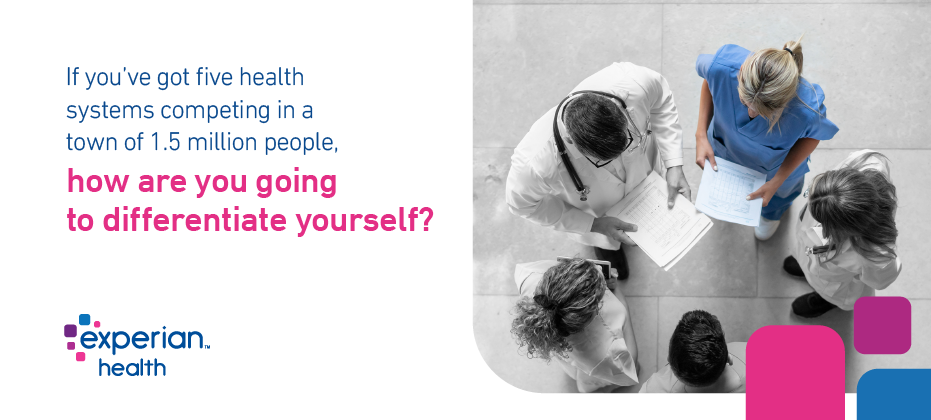
Before brands like Apple and Amazon became synonymous with consumer culture, the healthcare experience didn’t have much motivation to change. If you felt ill, you’d go see a doctor. The doctor would check you over, make a diagnosis and set you on the appropriate path to treatment. It was on you to initiate contact: your physician’s only job was to provide whatever care was needed, once you were in the system.
Today, the healthcare journey can look quite different. Patients have options. In an increasingly crowded market, it’s now up to providers to reach out and woo healthcare consumers. To stay ahead of the competition, providers must seek innovative ways to attract new consumers and inspire loyalty among existing members.
Chris Wild, Experian Health’s Senior Director of Consumer Engagement Solutions, says:
“Health systems have started taking a good, hard look at how they engage with patients, whether that’s marketing to new populations or encouraging patients to come in when they are sick. It all comes down to data. With a complete picture of the patient, you can loop together clinical information with insights about their lifestyle and attitudes, so you really know who they are and what they’ll need from your health system.”
Three ways consumer data can help you attract and retain patients
Data-driven marketing and engagement is a growing opportunity for providers. With the right data platform, it’s easier than ever to leverage reliable, high-quality data and analytics to better understand and serve your patients. In fact, Wild suggests there are three main ways marketing data can benefit healthcare providers (you can watch Wild talk about these on video):
1. Marketing to new and existing members
Why should prospective patients choose your hospital or physician’s practice? What would prevent existing patients from being tempted to switch providers? Understanding what makes your patients tick lets you pinpoint the exact benefits, priorities and language that will resonate with them most.
As Wild says: “If you’ve got five health systems competing in a town of 1.5 million people, how are you going to differentiate yourself? Once a patient picks up a provider and they’re relatively satisfied, they don’t change a lot. They’re starting to look at things like quality. They’re starting to look at cost and what’ll give them the biggest bang for their buck, but getting to them first is a big first-mover advantage for sure.”
ConsumerView bundles up reliable information on around 500 demographic, psychographic and behavioral attributes to help you get to know your target market, so you can get the right message in front of them at the right time.
2. Engaging with patients to improve health outcomes
Even if you’re the only health system in town, there’s still a need to engage. You want your patients to achieve the best possible health outcomes and often that requires them to take ownership of their health. You can help them do that by encouraging them to come in when they are sick, or by pointing them toward services that could make it easier for them to access care.
To do this effectively, you need to know what your patients need. ConsumerView has around 1500 verifiable data points on 300 million US consumers, covering about 98% of the US population. These can be used to discover how your patients think about their health and how they make their buying decisions. When that’s merged with your own information about their clinical journeys, you can give them a truly personalized healthcare experience.
3. Future-proofing your services
Finally, you can use these analytics to better understand your current patient population to make smarter decisions about the investments you need to make in future. Where are the bottlenecks in the patient’s healthcare journey? Where should you put new services? Robust data analytics help you say, “we need to invest here and this is why.”
Wild says, “I’m working with one analytics team that’s looking to better understand where they’re going to allocate physical and human resources so they can follow up with their patients more completely. They’re digging in deep to understand what their current patient population looks like, and then using that data to understand what their future population may look like.”
Data analytics helps you predict demand for services, so you can direct resources accordingly. You’ll be able to identify trends in patient pathways, so you can engage with patients earlier and make sure they get prompt care and support, giving them a better chance of a good outcome and saving your organization time and resources. Learn more about how your organization can drive marketing results through customer segmentation, targeted messaging and analytics



